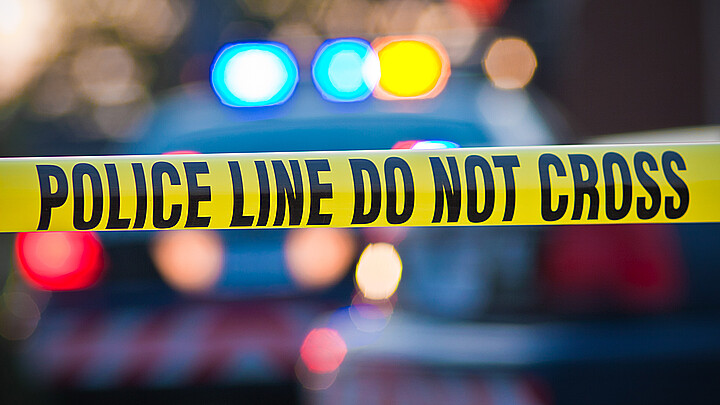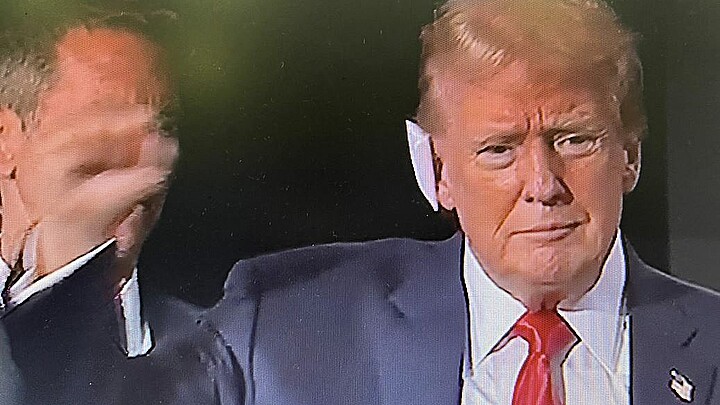Law Enforcement
Trump Pentagon first offered National Guard to Capitol four days before Jan. 6 riots, memo shows
Official Capitol Police timeline validates Trump administration's account, shows Democrats' fateful rejections of offers. "Seems absolutely illogical," one official wrote about security posture hours before riot began.
June 8, 2022 11:30pm
Updated: June 9, 2022 9:08am
The Pentagon first raised the possibility of sending National Guard troops to the U.S. Capitol four days before the Jan. 6 riots, setting in motion a series of rejections by Capitol Police and Democrats that left Congress vulnerable as threats of violence were rising, according to government memos that validate Trump administration officials' long-held claims.
An official timeline of the Jan. 6 tragedy assembled by Capitol Police shows that a Defense Department official reached out to a Capitol Police deputy chief, Sean Gallagher, on Jan. 2, 2021 to see if a request for troops was forthcoming, but the offer was quickly rejected after a consultation with then-Chief Steve Sund.
"Carol Corbin (DOD) texts USCP Deputy Chief Sean Gallagher, Protective Service Bureau, to determine whether USCP is considering a request for National Guard soldiers for January 6, 2021 event," the timeline reads in the lone entry listed for Saturday, Jan. 2, 2021.
The following morning, the timeline states, "Gallagher replies to DOD via text that a request for National Guard support not forthcoming at this time after consultation with COP Sund."
You can read the full police timeline here:
The rejection came as the Capitol Police department was beginning to change its assessment, recognizing that the massive Trump rally to protest the November 2020 election results planned for Jan. 6, 2021 had the potential for violence.
Earlier analyses suggested such violence was unlikely and the Jan. 6 event was likely to be “similar to the previous Million MAGA March rallies in November and December,” police records show
For instance, Capitol Police had determined that as of Dec. 16, 2020 there was "no information regarding specific disruptions or acts of civil disobedience targeting this function."
But by late December, Capitol Police internal emails and documents show, information began flowing in that some groups expected to attend were talking on social media or fringe websites about tactics like blocking tunnels leading to the Capitol.
On Sunday, Jan. 3, 2021, just hours after Gallagher rejected the Pentagon's initial offer, the Capitol Police issued a new and darker security assessment to its commanders and executives and to the two political appointees in Congress responsible for security, the House and Senate sergeants at arms, the timeline shows.
"Due to the tense political environment following the 2020 election, the threat of disruptive actions or violence cannot be ruled out," the new assessment declared. "Supporters of the current president see January 6, 2021 as the last opportunity to overturn the results of the presidential election. This sense of desperation and disappointment may lead to more of an incentive to become violent."
Within 24 hours, Sund had changed his mind and began seeking permission from the political powers surrounding House Speaker Nancy Pelosi and Senate Democratic Leader Chuck Schumer to deploy the National Guard as a preventive measure on Monday, Jan. 4, 2021.
The Capitol Police official timeline provides the most succinct summary of a series of events around Sund's request, some of which have been disputed and at times misreported in the news media.
"COP Sund asks Senate Sergeant at Arms (SSAA) Michael Stenger and House Sergeant at Arms (HSAA) Paul Irving for authority to have National Guard to assist with security for the January 6, 2021 event based on briefing with law enforcement partner and revised intelligence Assessment," the timeline recorded. "COP Sund's request is denied. SSAA and HSAA tell COP Sund to contact General Walker at DC National Guard to discuss the guard's ability to support a request if needed."
Walker, according to the police timeline, told Sund that if the chief could change minds and eventually get the approval from Capitol officials his team could deploy 125 troops quickly.
While Sund's requests were being delayed and denied, the Pentagon was forging ahead on Jan. 4, 2021 to get Trump to formally sign authorizations to deploy in advance of Jan. 6, 2021 as many as 20,000 National Guard troops if Congress asked, according to interviews Just the News has done with then-acting Defense Secretary Christopher Miller and his chief of staff Kash Patel.
"We went to the Capitol Police and the Secret Service and law enforcement agencies and Mayor Bowser days before January 6, and asked them, 'Do you want thousands of National Guardsmen and women for January 6?'" Patel said in a detailed interview earlier this year. "They all said no. Why did we do that? The law requires them to request it before we can deploy them. And the DOD IG found we did not delay, we actually prepared in a preemptive fashion, which is what we do at DOD."
Patel told Just the News on Wednesday night that the police timeline validated the account he has given to Congress.
"The Capitol Police timeline shows what we have been saying for the last year — that DOD support via the National Guard was refused by the House and Senate sergeant at arms, who report to Pelosi," Patel said. "Now we have it in their own writing, days before Jan. 6. And despite the FBI warning of potential for serious disturbance, no perimeter was established, no agents put on the street, and no fence put up."
As word circulated around the nation's capital that Sund wanted National Guardsmen deployed, District of Columbia Mayor Muriel Bowser wrote a preemptive letter to Miller and other Pentagon and Justice Department officials asking that troops not be deployed unless the Metropolitan Police Department approved, citing an incident in summer 2020, when troops were deployed at Lafayette Park near the White House during civil disobedience,
Bowser wrote in her Jan. 5, 2021 letter that the earlier episode "caused confusion" and could have become "a national security threat with no way for MPD and federal law enforcement to decipher armed groups."
"To be clear, the District of Columbia is not requesting other federal law enforcement personnel and discourages any additional deployment without immediate notification to and consultation with MPD, if such plans are underway," Bowser wrote, adding she believed her police department was "well trained and prepared to lead the way" to ensure Jan. 6 unfolded safely.
In the end, that did not happen. Capitol and D.C. police were overrun by rioters, and the Guard wasn't deployed until after violence spiraled out of control, causing a mad scramble to send troops that had been offered and rejected days earlier, the records show.
The evening before Jan. 6, the FBI's Norfolk, Va., office sent an explicitl warning to some high-ranking officials in the Capitol Police that there was new intelligence that some planned attendees were thinking of storming the Capitol and targeting lawmakers for violence.
"An online thread discussed specific calls for violence to include stating 'Be ready to fight. Congress needs to hear glass breaking, doors being kicked in and blood from their BLM and Antifa slave soldiers being spilled,'" the FBI bulletin read, relaying the exact words intercepted by intelligence. "'Get violent ... stop calling this a march or rally or a protest. Go there ready for war. We get our President or we die.'"
Remarkably, the Capitol Police's own after-action report concluded, that FBI intelligence warning was not shared with Sund or incorporated into the operational plan sent to police commanders and officers preparing to man the frontlines.
But with the Jan. 6 event mere hours away, Capitol Police — aware they had no National Guard backup — asked the Capitol Architect to make some last-minute changes and eliminate a bike rack that initially was going to be used as a perimeter barrier. The Architect obliged but viewed the police request as ill-advised, internal emails show.
"This seems absolutely illogical," Architect Brett Blanton wrote a colleague just 15 hours before the violence began. "It removes a zone of defense. If you find out a logical impetus for the change, let me know ASAP. I'll make calls to the board if necessary."










